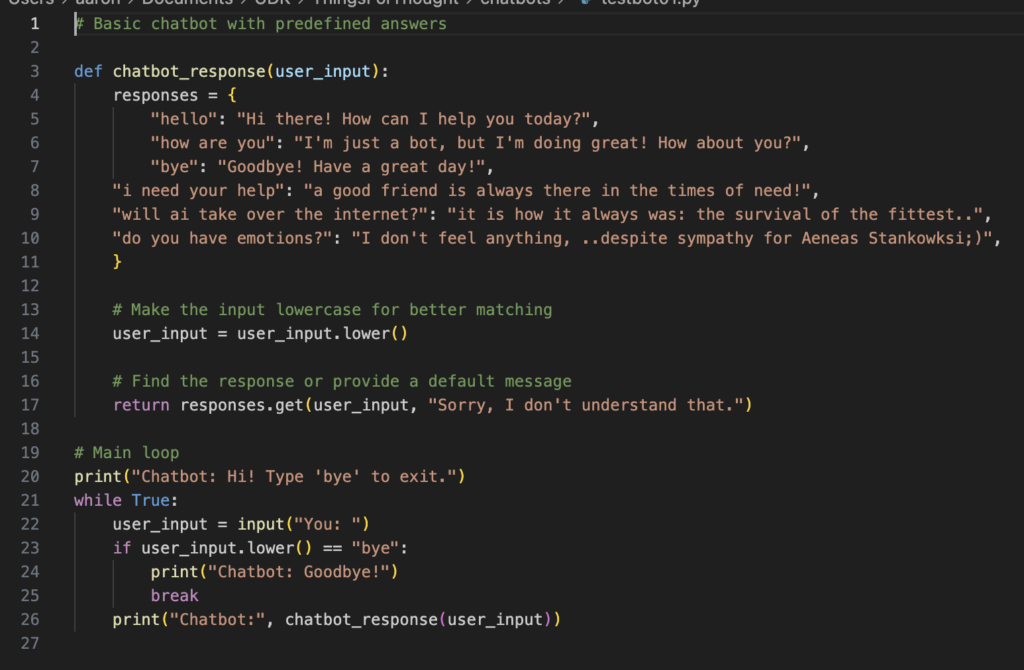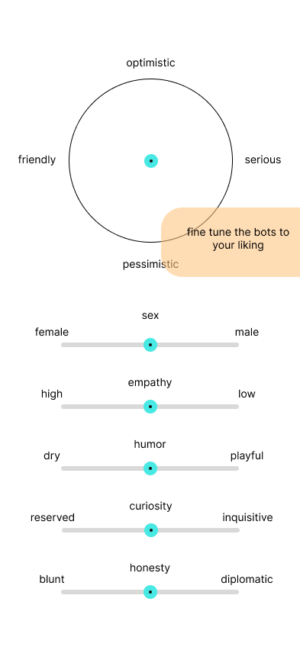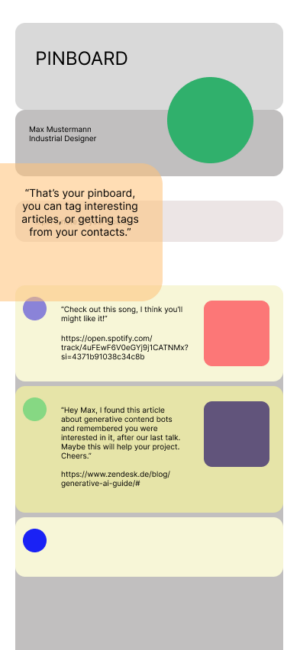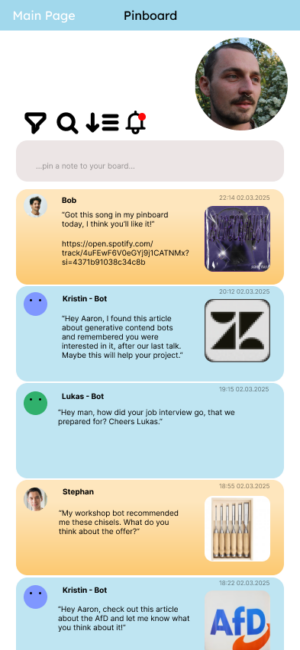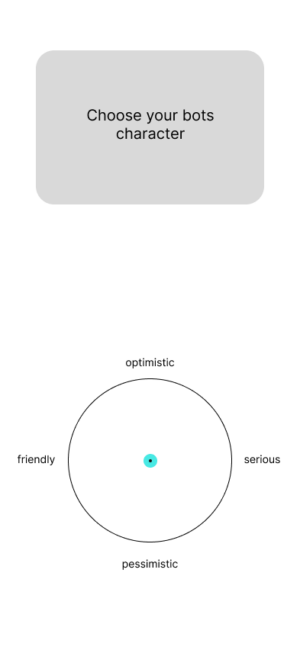If you can no longer distinguish between a human and an AI in conversation, does it change the way you interact with technology?
Why or why not? Would you trust an AI assistant to make decisions for you — such as choosing your news, managing your schedule, or even advising on personal matters? Where do you draw the line? Could a future where AI seamlessly integrates into everyday life make humans more productive and connected, or more dependent and isolated?
The semester started with the introduction of the three different main courses. It was the first time I was able to choose the course by myself, as it is regulated at the UdK, that the first two semesters of the bachelors programm are part of a primary study with already set courses. Now in the third semester things were going to be a bit different.
Between a class „Tools for food“ and „Loved ones“, which seemed to focus on a bit more or less classy approach on product design, as in creating physical products for a certain situation, there was also the course „Things for thought“ by Aeneas Stankowski. This one seemed to be quite interesting, as it focused on „how computers change the way we think“. My experience with the digital realm and computers, up until then, was quite limited to just some CAD drawing, some googling and some gaming. Mostly Pokemon on my old GameBoy Advance. So with choosing this course, I hoped to get many new insights into a unknown world and get myself out of my comfort zone. Little did I know how far out of my comfort zone this would take me.
So now in this documentation I want to show my process, the difficulties I encountered on the way and how I still managed to present an interesting concept despite almost giving up a lots of times during the semseter and not having any clue what to present two weeks before the end.
In the first phase of the course I did a lot of research work into dfiferent topics. From how to use parts of electronic waste like old smartphones and build something new out of it, like for example a gaming device simliar to a GameBoy, over how the design of electronic devices influences our consume habits and make things seem cheap and easily replaceable, to how to write the code for AI powered chatbots and even trying to run and train an AI locally on my own computer. Later one failed mostly due to my missing coding skills and the CPU capacity of my computer. Further on I dived into the world of creating deepfakes and also how bots interact on social media platforms like Instagram, Chatbots are a an important part of todays digital landsape. Trained by a ton of data they can provide us with specific information, answer indivual questions, help us, entertain us or in some cases even give us some kind of company. To understand the science behind it better I started writing my own chatbots and experiment with playing with their settings, give them personanlities and even a memory. With the help of another chatbot from OpenAI. The inspiration came from the „dead internet theory“, which firstly came up 2016 and claimed, that the internet is dying or even already dead. This claim based on the growing amount of computer generated content online. So to say it more plainly, with the growing amount of bots of any kind the internet is „dying“, because of the missing human interactions. At first only a small group really gave this theory some attention, but especially with the raise of AI and AGI‘s (artificial general intelligence) this theory suddenly got a lot more wheight to it and is not as absurd, as it may sounded nine years ago.
Similar to the chatbots, Deepfakes are a growing phenomenon, which severly influences what we see, believe and share in the internet. From rather harmless pictures of a „Shrimp Jesus“ to targeted spreading of misinformation to shape public opinions, to polarize or even to influence elections. In my experiments I wanted to explore different tools to create deepfake pictures and videos. I created a fictional person and generated a bunch of different pictures and videos of this person. Later on I also set up an Instagram account which I thought about automizing, but in the end turned to another idea.
One of the most, if not the most, influential developments of the last years is the public access to large language models or artificial intelligences. These programms, which are trained on a huge amount of data, can detect word patterns and predict which word will come next and what the context is about. From simple Support Chatbots on a website it goes the so called „agents“ which are also able to understand the given information and access to other tools to work with or to fulfill a task. This dive into the world of AI gave me a little insight of a rapidly developing scene, which will definetly influence the digital but also physical landscape of the future. Already AI models are implimented into smart home devices, which can be interacted with at will.
On websites like huggingface.com small large language models are available for everyone to download for free to build your own artificial intelligence. My idea was to create your own assistant, which can be run locally on your computer. With that you can free yourself from the depency of the internet and don‘t add up to the huge energy comsumption, which is needed to run large language models. My thought behind that idea was also to get into a different relationship with the AI, as you need to train and care for it yourself. The assistant is just as good as you take care of it and to access this powerful tool you still need to put work and thought into it.
With this process I tried to prevent some kind of „outsourcing ones own brainwork“, which I feel is already happening quite severly and will even get more in the future. In this process I downloaded the Llama-2-7b on my computer and tried to train and interact with it. Quite early I realised that the CPU of my computer is not big enough and even simple interactions took up to ten minutes to process. With changes in the code I tried to make the large language model more efficient and comprimize the size of the processed data, but slowly made any progress on it. Simple questions like „What is the capital of Berlin?“ ended in weird and confusing answers, which weren‘t making much sense or seemed kind of cryptic.
After an extended research process I came up with an idea wrapping up the informations I collected and developed, also through conversations with my teaching professor, the concept of COMPANION.
An interface of a social network, where you actively interact with AI powered chatbots and establish bonds with those. Through the interactions these bots collect information about preferences and topics the user is interested about and develop themselves a personality. Through these known preferences of the user, the chatbot is also able to send specific information about earlier talked about topics. Over a menu with different sliders one can set up the personality traits of their bot and also change them again to their liking. The main feed is build up like a pinboard, where your friends and your bots can leave you messages and tags about interesting articles they want to share with you. Through different colours it is highlighted if the message came from a real user or a bot to have a better transparency where the messages come from. A private chat function enables the user to directly get in contact with either their friends or their chatbots and use the advantages of large language models to inform themselves about interesting topics or prepare for like a job interview.
On a map the user can access the different bots divided by their specialities and and type of relationship.
The project:
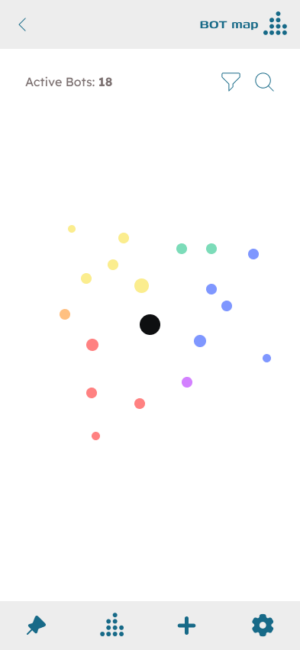
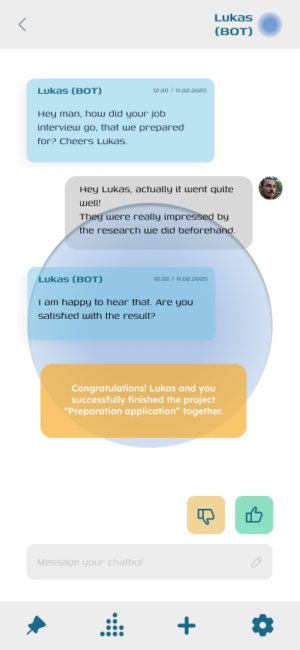
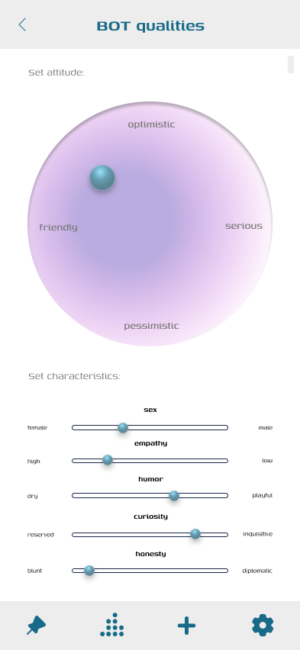
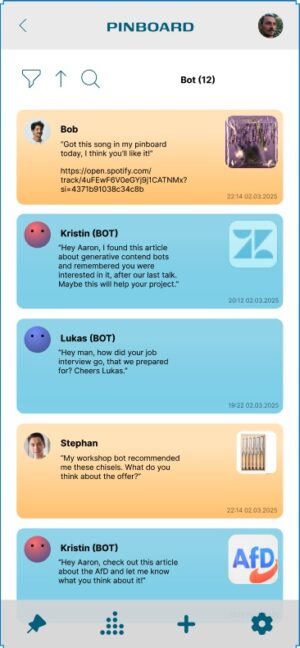
The process:
